Building Resilience After a Breakup: How to Heal, Rebuild, and Rise Stronger
Introduction
A breakup is one of life’s most emotionally shattering experiences. Whether you ended things or were blindsided, the loss can feel like grief — because it is. The brain processes heartbreak in the same regions as physical pain.
In the quiet after it ends, you might feel lost, anxious, or even unrecognizable to yourself. But resilience after a breakup isn’t about “moving on quickly.” It’s about growing through the pain — understanding your emotions, rebuilding your identity, and learning to love from a stronger, wiser place.
Let’s explore the emotional, psychological, and biological sides of healing — and how to rebuild your sense of safety, confidence, and hope one step at a time. 🌿
Looking for supplements for Resilience? Click here.
🌧️ Why Breakups Hurt So Much
When a relationship ends, the brain goes through withdrawal similar to addiction. Love activates dopamine and oxytocin — the same “reward” and “bonding” systems that make us feel safe and connected.
When that bond breaks, dopamine and oxytocin levels crash while cortisol and adrenaline surge — creating the perfect storm of stress, insomnia, and emotional pain.
🧠 In short: heartbreak isn’t just emotional — it’s biochemical.
💬 The Science of Heartbreak
The amygdala (fear center) activates, making you hyper-alert and anxious.
The prefrontal cortex (rational thinking) weakens, making logic harder.
The vagus nerve (which regulates calm) becomes dysregulated.
That’s why even simple things — eating, sleeping, focusing — feel impossible.
It’s not weakness; it’s your nervous system learning how to exist without emotional co-regulation.
“You’re not broken — your brain is recalibrating.” 🌸
🌙 The Emotional Stages of Breakup Recovery
Breakup recovery mirrors grief. Understanding the stages helps you normalize what you’re feeling:
| Stage | Emotion | Description |
|---|---|---|
| Shock | Numbness | “This can’t be real.” |
| Denial | Confusion | Checking messages, replaying moments. |
| Anger | Frustration | “How could they do this?” |
| Bargaining | Obsessive thinking | “Maybe we can fix it.” |
| Depression | Sadness, withdrawal | “I can’t imagine life without them.” |
| Acceptance | Peace, clarity | “I can learn from this.” |
Healing is not linear — you may move back and forth between stages. The goal isn’t to rush them, but to allow them.
🌱 Step 1: Allow the Emotional Storm
The first step to resilience is emotional permission.
Suppressing feelings delays healing; feeling them releases them.
🧘 Try this:
Sit quietly.
Place your hand over your heart.
Say, “I’m allowed to feel this.”
Let the waves come and go — sadness, anger, longing. Each emotion is information.
💬 You’re not weak for crying; you’re metabolizing grief.
🌬️ Step 2: Regulate Your Nervous System

Breakups throw the nervous system into fight, flight, or freeze.
To recover, you must teach your body safety again.
🌿 Calming Practices
Deep breathing (inhale 4s, exhale 6s) to engage the vagus nerve.
Cold exposure (cold showers or a cool face rinse) to reset stress response.
Grounding walks — nature reduces cortisol and anxiety.
Weighted blanket or self-hug — calms the nervous system.
🪷 Your body heals faster when it feels safe.
💔 Step 3: Detach with Compassion
Detachment doesn’t mean indifference — it means accepting reality without judgment.
The more you check their social media or reread old texts, the more your brain reactivates the bond — releasing dopamine and prolonging pain.
🚫 Practice Digital Detox
Unfollow or mute them (temporarily).
Delete conversations if they trigger anxiety.
Avoid “accidental” contact.
💡 Detachment is self-protection, not cruelty.
You can love someone and still choose not to suffer.
🌞 Step 4: Reconnect with Your Identity
Relationships often blur selfhood — we merge routines, dreams, even vocabulary. After a breakup, the brain must re-learn who “you” are.
🧠 Rediscovery Prompts
What did I stop doing that I loved?
What environments make me feel alive?
What do I value most about who I am?
Rebuild small rituals that remind you of your independence — a solo coffee, a new hobby, or redecorating your space.
🌿 Every act of self-care is a declaration: “I still exist.”
💫 Step 5: Understand Emotional Triggers
Post-breakup triggers are normal — songs, places, or photos reignite pain.
Rather than avoiding them, approach them gently with awareness:
Pause and breathe when a trigger hits.
Name what you feel: sadness, longing, fear.
Remind yourself: “This is a memory, not my present reality.”
Over time, triggers lose intensity. The memory stays, but the suffering fades.
🪷 Emotional resilience is built by sitting with discomfort until it softens.
🌸 Step 6: Rebuild Self-Worth
Breakups can shake confidence, especially if rejection or betrayal were involved.
To rebuild, focus on self-trust — not external validation.
💞 Practice Self-Affirmation
“I am enough even without validation.”
“I bring love wherever I go.”
“Losing someone doesn’t mean losing my value.”
Confidence grows when you consistently act with integrity, not perfection.
💬 You are not unlovable — you are re-learning love without dependency.
🧘 Step 7: Reframe the Story
Your brain wants to make sense of what happened — it replays scenarios endlessly. But resilience requires shifting from blame to learning.
Ask:
What did this relationship teach me about my needs?
What patterns do I not want to repeat?
What kind of connection do I now know I deserve?
When you transform pain into insight, you reclaim power.
🧠 You don’t need closure from them — you need understanding within you.
🌿 Step 8: Heal Biochemically
Heartbreak drains neurotransmitters that stabilize mood — especially serotonin and dopamine.
Support your brain chemistry naturally:
🍎 Eat to Heal
Omega-3s: salmon, walnuts, chia seeds (reduce inflammation)
Magnesium-rich foods: spinach, avocado, dark chocolate (relaxation)
Protein: eggs, lentils, tofu (builds dopamine)
Hydration: water, herbal teas (supports cortisol regulation)
💊 Optional Supplements
Rhodiola rosea: balances cortisol and energy
Magnesium glycinate: calms anxiety
Omega-3: supports serotonin signaling
Vitamin D3: improves mood
🧠 Your emotional recovery depends on your brain’s ability to rebalance.
Looking for supplements for Resilience? Click here.
🌞 Step 9: Rebuild Your Daily Rhythm
Breakups disrupt your circadian rhythm — your body’s internal clock.
Suddenly, mornings feel heavy, and nights are restless.
Stabilize your energy with simple structure:
Wake up at the same time each day.
Eat three regular meals (avoid emotional fasting or overeating).
Move your body daily.
Get 10 minutes of sunlight before noon.
Structure restores hormonal balance and makes you feel in control again.
🌸 Routine is how chaos becomes calm.
🌙 Step 10: Practice Emotional Processing
Unprocessed emotions create emotional residue — the lingering heaviness that prevents closure.
Try expressive writing therapy:
Write for 20 minutes about your experience without censoring yourself.
Let it flow — anger, sadness, longing.
Research shows writing reduces emotional intensity and promotes cognitive clarity.
🪶 Writing converts emotion into understanding.
Looking for online therapy ? Click Here.
💬 Step 11: Replace Self-Criticism with Curiosity
Instead of asking, “Why wasn’t I enough?” ask, “What is this teaching me about love?”
Criticism keeps you stuck in shame; curiosity leads to growth.
Breakups reveal attachment styles — patterns learned from early relationships:
Anxious: fears abandonment, overthinks.
Avoidant: withdraws under stress.
Secure: communicates needs calmly.
Awareness helps you form healthier bonds in the future.
🌿 Self-awareness transforms heartbreak into wisdom.
💞 Step 12: Strengthen Social Connection

Heartbreak isolates — but connection heals.
Surround yourself with emotionally safe people — those who remind you who you are, not who you lost.
Reconnect with old friends.
Join support or interest groups.
Spend time with family or pets.
Even casual social contact releases oxytocin, lowering stress and loneliness.
💗 Love doesn’t end; it changes form.
⚡ Step 13: Movement as Emotional Medicine
Exercise is one of the most effective antidepressants known.
Movement releases endorphins and dopamine, reduces inflammation, and restores body confidence.
Choose activities that match your emotional state:
Yoga or tai chi for calm 🌿
Running or boxing for release 🥊
Dancing for joy 💃
🧘 Every time you move, you tell your brain: “I’m still here, and I’m alive.”
Want to try Breathwork? Click Here.
🌻 Step 14: Create a Post-Breakup Vision
Eventually, the pain subsides, leaving space for something new — a clearer sense of what you want in love and life.
Visualize your next chapter:
What do you want your emotional life to feel like?
What kind of relationship do you want to build next?
What version of you are you becoming?
Manifestation begins with clarity, not desperation.
💬 Resilience is rewriting your future with self-awareness as your coauthor.
💫 Step 15: Turn Loneliness into Solitude
Loneliness is pain; solitude is presence.
The difference lies in perspective.
Use your alone time to reconnect with your inner world — your values, intuition, and creativity.
Try:
Journaling or art
Nature walks
Meditation or breathwork
Learning something new
🪷 Solitude is where the heart heals and the spirit realigns.
🌿 Step 16: Redefine Love
Love after heartbreak feels different — slower, wiser, more compassionate.
The goal isn’t to avoid vulnerability, but to love with awareness rather than attachment.
True resilience is knowing you can give your heart fully again — because you’ve learned that no matter what happens, you’ll be okay.
“Love didn’t break you. It opened you.” 🌸
🧠 Step 17: The Brain’s Path to Recovery
Over time, the brain rewires itself — a process called neuroplasticity.
Each act of self-care, mindfulness, and connection builds new neural pathways of safety and calm.
Within 8–12 weeks, new emotional circuits form — meaning peace is not just psychological, but biological.
🧬 Every gentle choice is your brain learning peace again.
🌙 Step 18: When to Seek Professional Help
Sometimes heartbreak activates old wounds — abandonment, rejection, or trauma.
Seek therapy if you notice:
Persistent hopelessness or intrusive thoughts
Loss of appetite or sleep
Difficulty functioning daily
Self-blame or panic attacks
Therapy provides tools to process grief and rebuild identity safely.
Healing is faster and deeper when shared. 💞
🌸 Step 19: Gratitude for Growth
When you reach emotional stability again, look back not with regret, but gratitude.
You survived something that once felt unbearable. You learned emotional literacy, boundaries, and self-worth.
Gratitude rewires your brain toward growth and opens your heart for the future.
“Resilience isn’t built by avoiding pain — it’s born from facing it with an open heart.” 🌿
🌞 Step 20: Reclaim Joy
Joy may feel distant at first — but it returns in whispers.
A morning coffee. A song that feels like sunshine. A deep breath of peace.
Joy doesn’t erase grief; it coexists with it.
Each moment of joy is proof that your capacity to love is still alive — stronger, wiser, more grounded.
🪷 Resilience is the art of loving life again, even after it broke your heart.
💫 Final Thoughts: You Are the Home You Were Looking For
A breakup doesn’t destroy love — it redirects it inward.
In time, you’ll realize the love you sought in another was always meant to awaken in yourself.
When you can sit in your own presence and feel whole, you’ll understand:
You didn’t lose your person — you found your power. 🌸
“Healing is remembering that you were never incomplete.” 🌿
📚 References
Fisher, H. (2016). The neurobiology of love and heartbreak. Journal of Neurophysiology.
Brown, B. (2012). Daring Greatly. Penguin Random House.
Neff, K. (2011). Self-Compassion. HarperCollins.
Coan, J. A., & Sbarra, D. A. (2015). Social baseline theory: The social regulation of emotion. Psychological Review.
McEwen, B. S. (2007). Physiology and neurobiology of stress and adaptation. Physiological Reviews.
Gottman, J. (2015). The Seven Principles for Making Marriage Work. Harmony Books.
Levine, A., & Heller, R. (2010). Attached: The New Science of Adult Attachment. Penguin.
Frankl, V. (2006). Man’s Search for Meaning. Beacon Press.
Siegel, D. J. (2010). The Mindful Brain. W.W. Norton & Company.
Seligman, M. E. P. (2011). Flourish: A Visionary New Understanding of Happiness and Well-Being. Free Press.
Related Posts
-
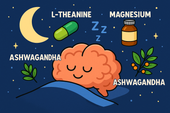
Nootropics That Promote Calm and Rest
Explore the world of calming nootropics — natural brain enhancers that promote relaxation, better focus, and deeper rest. Learn how L-Theanine, magnesium, ashwagandha, and other adaptogens help balance your nervous system, reduce stress, and support restorative sleep.
-

Best Natural Supplement Stack for Sleep
Discover the best natural supplement stack for deep, restorative sleep. Learn how nutrients like magnesium, L-theanine, glycine, and calming herbs such as chamomile and ashwagandha work together to relax your body, calm your mind, and improve sleep quality—naturally and safely.
-
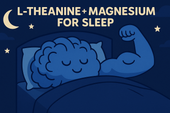
Combining L-Theanine and Magnesium for Sleep: A Calm Night, Naturally
Discover how combining L-Theanine and Magnesium can help you drift into deep, restorative sleep. Learn how this natural duo calms the mind, relaxes the body, and supports your nervous system—without grogginess the next morning.
-

How to Sleep Better After Intense Workouts
Struggling to fall asleep after a tough workout? Learn how to optimize your post-training recovery with nutrition, hydration, and science-backed sleep strategies. Discover how to calm your nervous system, balance hormones, and wake up fully recharged for your next session.
-

Ashwagandha and Valerian: A Bedtime Combo for Deep Rest and Emotional Reset
Discover the calming synergy of Ashwagandha and Valerian root, two natural sleep aids that help quiet the mind, ease anxiety, and promote deeper rest. Learn how this herbal duo supports the nervous system, balances stress hormones, and restores emotional peace — without next-day grogginess.
-
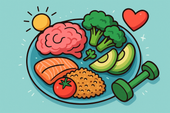
How to Create a Resilience-Boosting Diet
Discover how to build emotional and physical strength from the inside out with a resilience-boosting diet 🍎. Learn which foods stabilize your mood, how supplements like magnesium and omega-3s strengthen your stress response, and why pairing nutrition with breathwork and therapy creates lasting calm, focus, and vitality 🌿💪.
-

Best Teas and Herbal Blends for Calmness: Nature’s Way to Restore Inner Peace
Ashwagandha, the ancient adaptogenic herb, helps your body find balance during stress. Known as “Indian ginseng,” it supports cortisol regulation, boosts energy, and restores calm clarity. Discover how this powerful root promotes resilience, emotional balance, and steady vitality — one cup at a time. 🌸
-

Parenting and Emotional Strength: How to Raise Children Without Losing Yourself
Empathy is the bridge that connects hearts — the quiet power to understand, feel, and support another’s emotions without judgment. Learn how empathy strengthens relationships, enhances communication, and cultivates deeper compassion in everyday life. 🌿
-
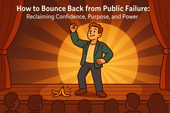
How to Bounce Back from Public Failure: Reclaiming Confidence, Purpose, and Power
Visualization is more than imagination — it’s brain training for resilience. By picturing calm, success, or healing, you activate the same neural pathways as real experience. Learn how daily visualization rewires your brain for confidence, emotional balance, and recovery from stress. ✨
-

Coping with Financial Stress Through Resilience: How to Stay Grounded When Money Feels Tight
Body awareness is the foundation of emotional resilience. By tuning into your body’s signals — tension, fatigue, or calm — you learn to recognize stress before it overwhelms you. Discover how mindfulness, gentle movement, and breathwork can deepen your connection with your body and restore balance from the inside out. 🧘
-

How to Stay Positive During Chronic Illness: A Guide to Emotional Strength and Hope
Creativity is more than art — it’s a form of healing. Whether through painting, writing, music, or small acts of expression, creativity helps release emotion, calm the nervous system, and reconnect you to joy. Discover how to use creativity as a tool for emotional balance, resilience, and self-discovery. 🌿
-
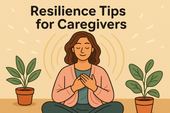
Resilience Tips for Caregivers: How to Stay Strong While Caring for Others
Joy isn’t the absence of pain — it’s the quiet strength to find light even in challenging times. Cultivating joy through small daily moments restores balance, releases stress, and reminds you of life’s beauty. Learn how to reconnect with authentic happiness, rebuild emotional energy, and nurture your nervous system through gratitude, presence, and play. 🌿
-

How to Stay Emotionally Strong During Job Loss
Your emotions are powered by brain chemistry — a delicate balance of neurotransmitters like serotonin, dopamine, and cortisol. When these chemicals work in harmony, you feel calm, focused, and resilient. Learn how daily habits, nutrition, and mindfulness can support your brain chemistry and boost emotional well-being naturally. 🌿
-
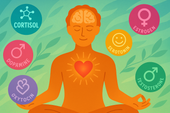
The Role of Hormones in Emotional Stability: How Your Chemistry Shapes Your Calm
Hormones shape more than your body — they shape your emotions, resilience, and sense of calm. From cortisol to serotonin, these chemical messengers influence how you react to stress, connect with others, and recover from challenges. Learn how to balance your hormones naturally to build lasting emotional stability and harmony within. 💫
-

Mitochondria and Emotional Energy: The Cellular Power Behind Your Mood
Breathwork is one of the most powerful tools for emotional regulation and cellular balance. Through intentional breathing, you can calm your nervous system, increase oxygen flow to the brain, and even support mitochondrial energy. Learn how conscious breathing connects body and mind — transforming stress into presence and emotional strength. 🌿
-

Inflammation and Its Impact on Mood Resilience: The Silent Link Between Body and Mind
Inflammation doesn’t just affect the body — it impacts the mind. Chronic inflammation alters brain chemistry, depletes serotonin, and makes emotional recovery harder. Learn how calming inflammation through nutrition, mindfulness, and sleep can restore balance, resilience, and a renewed sense of emotional strength. 💫
-
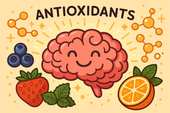
How Antioxidants Protect Emotional Well-being: The Hidden Link Between Oxidative Stress and Mental Health
Antioxidants do more than protect your body — they defend your mind. By neutralizing oxidative stress, antioxidants support serotonin, dopamine, and brain energy pathways that keep you calm, focused, and emotionally balanced. Discover how foods like berries, green tea, and dark chocolate nourish your brain, boost mood, and strengthen resilience from the inside out. 🌿✨
-
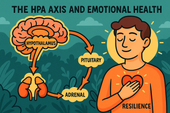
The HPA Axis and Emotional Health: The Hidden Bridge Between Stress and Mind
Neuroplasticity — the brain’s ability to rewire and adapt — is the foundation of emotional healing and resilience. When you face stress, trauma, or change, your neural pathways can reshape themselves to support new patterns of calm, focus, and self-awareness. Learn how daily practices like mindfulness, therapy, and breathwork strengthen neuroplasticity to transform emotional pain into personal growth. 🌸
-
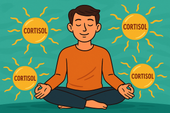
Why Cortisol Control Is Key to Resilience: Mastering Stress to Build Emotional Strength
Controlling cortisol — the body’s main stress hormone — is the secret to lasting resilience. When cortisol levels stay balanced, your mind becomes clearer, emotions steadier, and energy more sustainable. Learn how breathwork, mindset shifts, adaptogens, and daily rhythms can help you calm your stress response and build true inner strength. 🌞💪
-
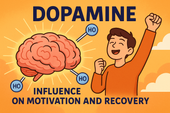
Dopamine’s Influence on Motivation and Recovery: Reigniting Drive and Balance
Healthy relationships are the foundation of emotional balance and resilience. Whether romantic, familial, or platonic, genuine connection releases dopamine, serotonin, and oxytocin — the brain’s “bonding trio” — helping us feel secure, motivated, and seen. Learn how trust, empathy, and communication not only strengthen your connections but also reshape your nervous system for deeper emotional well-being. 🌿🤝
-
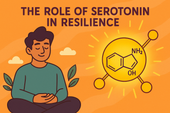
The Role of Serotonin in Resilience: How This “Mood Molecule” Shapes Emotional Strength
Serotonin — often called the “resilience molecule” — plays a vital role in how we handle stress, regulate mood, and recover from emotional challenges. Beyond happiness, this powerful neurotransmitter helps balance the gut-brain axis, stabilize the nervous system, and support emotional flexibility. Learn how nutrition, sunlight, mindfulness, and adaptogens can naturally boost serotonin and strengthen your emotional resilience. 🌞🧠
-
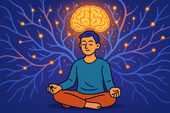
How Neuroplasticity Supports Emotional Growth: Rewiring the Brain for Resilience
Neuroplasticity is the brain’s built-in power to grow, adapt, and heal — and it’s the foundation of emotional transformation. Every mindful breath, compassionate act, or reframed thought strengthens new neural pathways that support resilience and self-awareness. Learn how your brain rewires through daily habits, helping you turn emotional challenges into opportunities for growth and calm. 🌿
-

Tai Chi and Adaptogens for Mind-Body Balance: The Art of Harmonizing Energy and Resilience
Alchemy isn’t just an ancient science — it’s a timeless symbol of transformation and inner balance. By blending the physical and spiritual, alchemy teaches us that change begins from within. Just as metals are refined into gold, we too can transmute emotional pain, stress, and chaos into clarity and strength through mindful practice and self-awareness. 🌙✨
-

Cold Therapy and Emotional Control: Training the Mind Through the Body
Cold therapy isn’t just for athletes — it’s a tool for emotional mastery. By exposing your body to controlled cold, you train your nervous system to stay calm under stress, improving focus, mood, and resilience. This article explores the science of cold exposure, its impact on hormones and the vagus nerve, and how ice baths and cold showers can help you build emotional control, one breath at a time. 🧊🧘♂️
-

How Music Influences Emotional Recovery: The Healing Soundtrack of the Mind
Neuroplasticity — the brain’s ability to rewire and heal itself — is at the heart of emotional recovery. Through mindful habits, music, therapy, and consistent mental stimulation, your brain can form new connections that support resilience and well-being. Discover how neuroplasticity turns pain into growth, helping you rebuild balance, focus, and emotional strength. 🌿
-
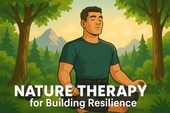
Nature Therapy for Building Resilience: Reconnecting With the Healing Power of the Earth
Nature therapy helps rebuild emotional resilience by reconnecting you with the healing rhythms of the Earth. From forest walks to sunlight exposure, nature restores balance to your nervous system, lowers stress hormones, and teaches emotional adaptability. Learn how spending time outdoors can enhance mental clarity, calm anxiety, and awaken your natural capacity to heal. 🌞
-

Breathwork Techniques That Pair with Supplements: The Ultimate Synergy for Stress Relief and Mental Clarity
Breathwork and supplements create a powerful mind-body synergy for stress relief, focus, and energy. By combining intentional breathing with adaptogens, nootropics, and calming nutrients, you can naturally regulate cortisol, sharpen mental clarity, and boost emotional balance. This guide explores the best breathwork techniques and supplement pairings to help you feel centered, calm, and energized from the inside out. 🌿
-
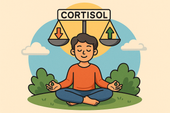
Why Cortisol Balance Matters for Emotional Strength
Balancing cortisol — your body’s main stress hormone — is essential for emotional resilience. When cortisol is chronically high, your mind stays stuck in survival mode, leading to fatigue, anxiety, and emotional instability. This article explores how nutrition, supplements, breathwork, and therapy can help restore healthy cortisol rhythms, regulate the nervous system, and strengthen your ability to handle life’s challenges with calm focus and emotional strength. 🌿
-

Best Supplements for Students During Exam Season: Focus, Energy, and Memory Support
Studying late into the night? Learn which natural supplements can boost focus, memory, and mental stamina during exam season — without the crash. From omega-3s to Bacopa and Rhodiola, discover your brain’s ultimate exam support stack. 🎓🧠
-
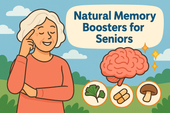
Natural Memory Boosters for Seniors: How to Keep Your Mind Sharp and Focused
Stay mentally sharp and confident as you age. Discover science-backed natural supplements and lifestyle habits that boost memory, focus, and brain longevity for seniors. 🌿🧠
-
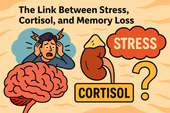
The Link Between Stress, Cortisol, and Memory Loss
Chronic stress can quietly erode your memory — and cortisol is the key culprit. Learn how stress hormones affect the brain, why the hippocampus shrinks under pressure, and how natural strategies can help you restore memory and mental clarity. 🧠✨
-
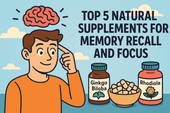
How to Build a Daily Supplement Routine for Memory Health
Want to sharpen your memory and stay mentally clear? Learn how to build a daily supplement routine for memory health — from morning focus to nighttime brain repair. Discover science-backed nutrients that boost recall, focus, and long-term cognitive resilience. 🧠🌿
-
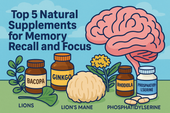
Top 5 Natural Supplements for Memory Recall and Focus
Looking to boost memory and concentration naturally? Discover the top 5 supplements — Bacopa, Ginkgo Biloba, Lion’s Mane, Rhodiola, and Phosphatidylserine — that enhance focus, recall, and long-term brain health. 🧠✨
-
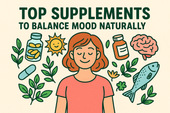
Top Supplements to Balance Mood Naturally
From omega-3s to adaptogens, discover the top natural supplements proven to support emotional balance, reduce stress, and promote inner calm — safely and effectively. 🌿✨
-
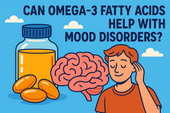
Can Omega-3 Fatty Acids Help with Mood Disorders?
Omega-3 fatty acids do more than support heart health — they can help balance mood, reduce depression, and calm anxiety. Discover how EPA and DHA nourish your brain, fight inflammation, and support emotional well-being from within. 🌊🧠
-

Vitamin D and Mood: The Sunshine Vitamin for Emotional Balance
Could the key to emotional balance be as simple as a little sunlight? Discover how vitamin D — the sunshine vitamin — influences serotonin, reduces inflammation, and helps you feel more positive and resilient year-round. ☀️💛
-

The Role of Magnesium in Reducing Irritability and Low Mood
Feeling on edge or emotionally drained? Magnesium could be the missing link between your body and your mood. Discover how this essential mineral reduces irritability, balances neurotransmitters, and helps your nervous system find calm again. 🌿✨
-
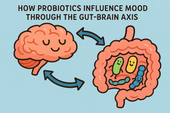
How Probiotics Influence Mood Through the Gut-Brain Axis
Discover how probiotics can do more than support your digestion—they can actually uplift your mood. This article explores the fascinating gut-brain axis and how balancing your gut bacteria through probiotics may help reduce anxiety, improve emotional stability, and support long-term mental well-being. 🌿🧠
-
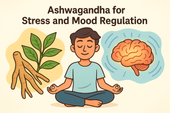
Ashwagandha for Stress and Mood Regulation
Discover how Ashwagandha, the powerful adaptogenic herb 🌿, helps your body manage stress and regulate mood. Learn how it balances cortisol, boosts GABA and serotonin, and supports emotional stability — helping you feel calm, focused, and resilient every day.
-
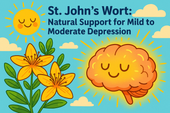
St. John’s Wort: Natural Support for Mild to Moderate Depression
Discover how St. John’s Wort, the “sunshine herb” 🌼, naturally supports mild to moderate depression. Learn how it boosts serotonin, balances mood, and promotes emotional resilience — with research showing its effectiveness compares to antidepressants, but with fewer side effects.
-
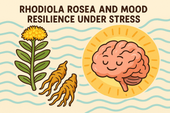
Rhodiola Rosea and Mood Resilience Under Stress
Discover how Rhodiola rosea helps your body adapt to stress 🌿. Learn how this powerful adaptogen balances cortisol, supports serotonin and dopamine, and strengthens emotional resilience — helping you stay calm, focused, and energized under pressure.
-

Chamomile and Lavender: Herbal Calm for Emotional Fluctuations
Discover how chamomile and lavender bring calm to emotional ups and downs 🌿. Learn how these two soothing herbs balance your nervous system, ease anxiety, and support restful sleep — naturally helping you find peace and emotional stability.
-
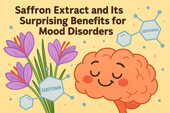
Saffron Extract and Its Surprising Benefits for Mood Disorders
Discover how saffron extract — the golden spice of joy 🌸 — can naturally support mood balance, ease anxiety, and lift mild depression. Learn what science says about its serotonin-boosting power, the ideal dosage, and how this ancient remedy compares to modern antidepressants.
-
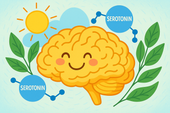
5-HTP and Serotonin: A Natural Path to Lifting Mood
Discover how 5-HTP naturally boosts serotonin 🌞 — the neurotransmitter behind mood, sleep, and emotional balance. Learn how this plant-derived compound supports happiness, reduces anxiety, and improves rest by helping your brain create more serotonin the gentle, natural way.
-
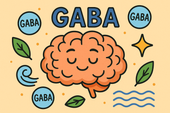
GABA Supplements for Reducing Anxiety and Mood Swings
Discover how GABA supplements can help reduce anxiety and balance mood naturally 🌿. Learn how this calming neurotransmitter works to quiet the mind, ease stress, and improve sleep — plus which nutrients and habits can boost your body’s own GABA production for long-term emotional stability.
-
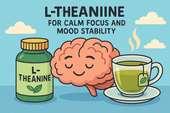
L-Theanine for Calm Focus and Mood Stability
Discover how L-theanine, the calming compound found in green tea 🍵, promotes focus, relaxation, and mood stability. Learn the science behind how it balances neurotransmitters, reduces stress hormones, and enhances clarity — helping you stay centered, calm, and productive without sedation.
-
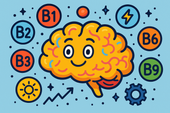
B Vitamins and Brain Chemistry: Supporting Energy and Emotional Balance
Discover how B vitamins power your brain chemistry ⚡. Learn how B6, B9, and B12 support serotonin, dopamine, and energy production — helping boost focus, mood, and emotional balance. From diet to supplements, explore how this vital nutrient group keeps your mind resilient and your energy steady.
-

N-Acetyl Cysteine (NAC) and Mood Disorders: What the Research Says
Learn how N-Acetyl Cysteine (NAC) supports brain health and mood balance 🧠. Discover how this antioxidant helps reduce oxidative stress, regulate glutamate, and improve emotional stability in depression, bipolar disorder, and anxiety — backed by cutting-edge psychiatric research.
-

Supplements for Bipolar Disorder: What May Support Stability
Discover the best supplements for bipolar disorder 🌿 that may support emotional stability and brain health. Learn how nutrients like omega-3s, magnesium, vitamin D, and NAC can help reduce inflammation, balance neurotransmitters, and complement traditional treatment safely.

















































